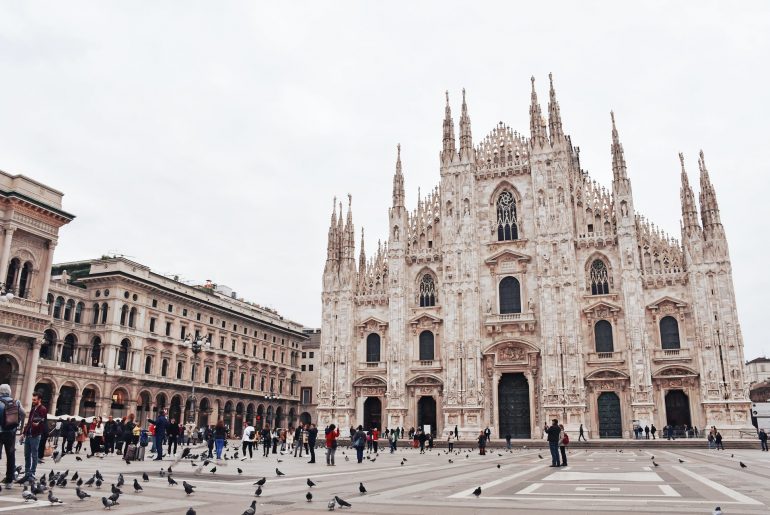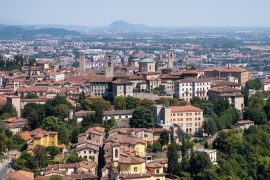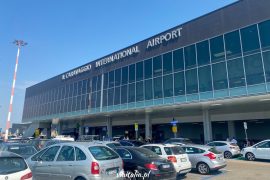Although not the capital of Italy, Milan in many ways gives that impression. It is the center of many important areas of life - it is the center of Italian finance, culture and sports, as well as the fashion capital of Europe. How to plan a trip to Milan and what is worth seeing in it?
Milan is definitely not one of those cities that can be recommended for a weekend visit. There are simply too many attractions here to see even a small peril of them in 2 days, and after such a stay a tourist would leave the city feeling very unsatisfied. It is worth spending at least a week in the capital of Lombardy to experience at least a little of the extraordinary climate and immerse yourself in the atmosphere of Milan's streets, charming pubs and monumental monuments.
Milan is the second largest urban center in Italy, just after the Rome - population is 1.3 million, and multiples of that number are tourists who visit the city every year in search of phenomenal architecture and cultural experiences. The city is home to dozens of world-class museums and at least as many historic religious buildings with interesting histories.
However, the city is constantly betting on development - it does not want to be associated only with monuments of bygone times, so many of the local attractions are as contemporary as possible and are a real treat even for those who are not interested in history. Introducing a guide to Milan!
Milan - tourist attractions
The capital Lombardi is divided into 9 districts (municipio), the most important of which is, of course, the historical center. It is from it that you should start your tour of Milan, which is best inaugurated early in the morning, because there are really many objects to visit.
Cathedral and Piazza Duomo
The city's main square is a good place to start a tour, as many of Milan's most popular attractions are within a few hundred meters of it. Directly adjacent to the square is the monumental Gothic cathedral Duomo di Milano, which is one of the city's most recognizable landmarks. Construction of the cathedral began in the second half of the 14th century and ended during the Napoleonic era. It was in this cathedral that Napoleon was crowned King of Italy in 1805.
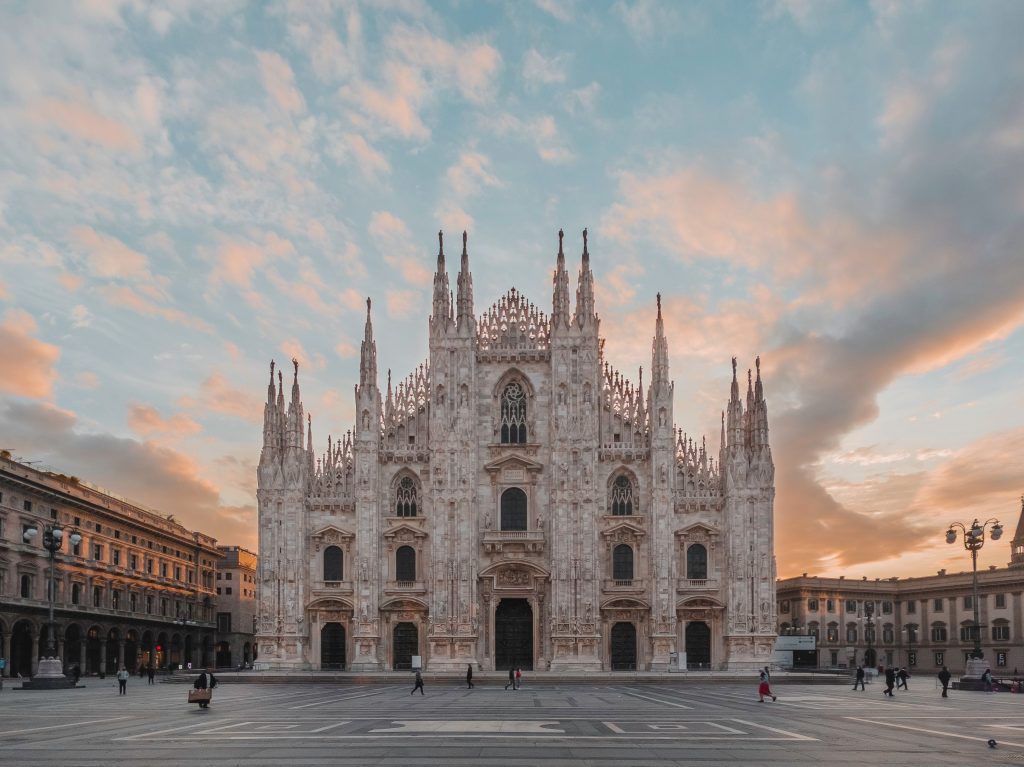
From the outside, tourists are most impressed by the marble facade of the building, with intricately carved details. The interior of the cathedral can be explored, and the highlight of this tour is the climb to the roof of the building, which offers an amazing panorama of the city. Admission to the cathedral is €5, and tickets can be purchased online.
Right next to Milan's cathedral is the Palazzo Reale Milano - royal palace, decorated in neoclassical style, which for centuries was the seat of the city government. This historic palace suffered from the warfare of World War II - it was restored quite recently, at the beginning of this century. Currently, the building serves as a museum, with art exhibitions held here. The palace is open from Tuesday to Sunday from 10 am to 7:30 pm, except on Thursdays, when the museum doors do not close to the public until 10:30 pm.
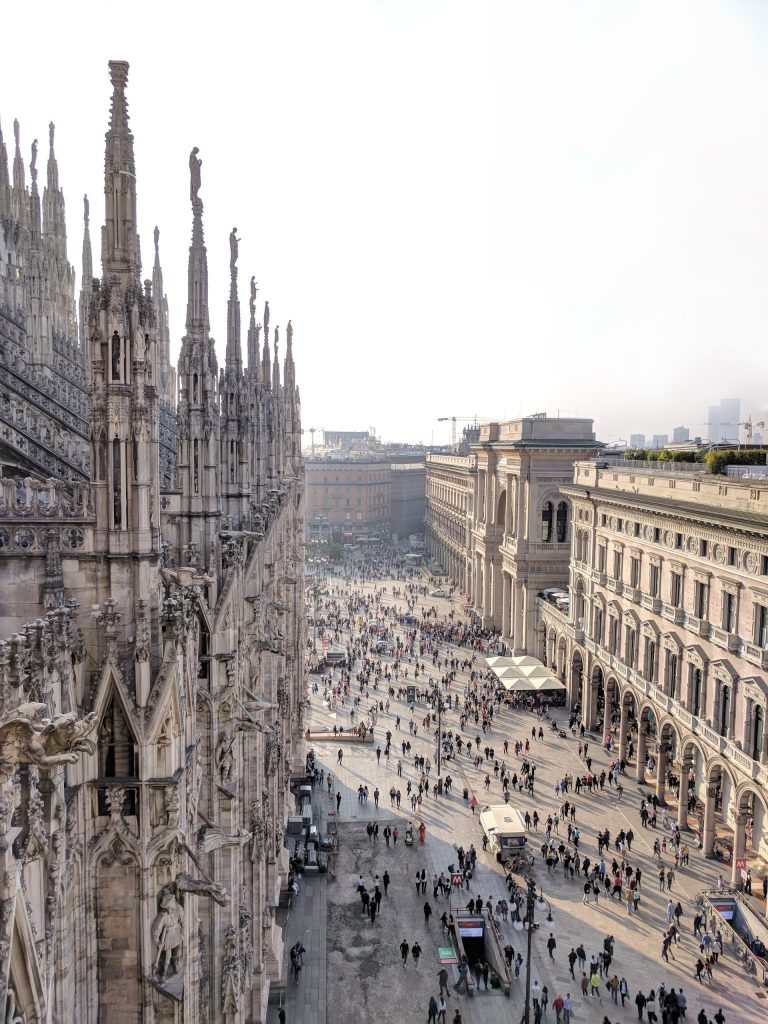
La Scala
Just 350 meters from Piazza Duomo is La Scala, the most famous milanese opera, capable of accommodating 3,600 people. It is one of the most important venues of its kind in the world, where some of the globe's greatest opera stars have performed over the centuries. The building was built in the 18th century, and at the beginning of the current century it underwent a major renovation, which cost the city more than €61 million. The result of these works was a 38-meter tower, as well as an elliptical extension. In addition to the opera house, a museum operates on the premises. You can buy a guided tour - the program includes a visit to the boxes (including the royal box), the foyer, and backstage, where you can see the mechanized system that sets the stage in motion.
Tours take place daily from Monday to Sunday - for English-speaking tourists they start at 4 pm and last 45 minutes. The price of admission is not low - it is as high as €25, and the maximum number of visitors is 20. More information can be found on the official website.
Gallerie d'Italia
Near the opera house you can find another interesting object, which is the museum of Italian art from the 19th and 20th centuries. It hosts a number of temporary exhibitions, but the museum also has an extensive collection of artworks on display in perpetuity. The work of art is already the building itself, the spacious interior with its ornate floor and stained glass ceiling delights tourists and creates an elevated atmosphere for artistic contemplation.
The museum is open Tuesday through Sunday from 9:30 a.m. to 7:30 p.m. The cost of admission is €8-10.
Palazzo Marino
Right next to the Italian gallery is the Palazzo Marino, a palace built in the 16th century that served as the city's town hall starting in the 18th century. Today it houses the offices of the mayor and other important Milanese officials. The palace has several interesting rooms, among which the clock room stands out, with a beautifully decorated ceiling and an antique clock above the entrance door. The walls of the clock room are decorated with paintings, and the beautiful marble floor is also noteworthy.
There are guided tours of the facility - some of which are free. The free tour can be taken on Tuesdays, Thursdays and Fridays at 9:30 a.m., 10:30 a.m., 11:30 a.m., 2 p.m. and 3 p.m. Audio translation in several languages, including English and German, is available; Polish is not on this list.
Galleria Vittorio Emanuele II
The Victor Emanuel II Gallery is a historic building from the 19th century, and now houses a famous shopping arcade where the most luxurious fashion brands have their stores. There are also famous pubs where you can dine after a successful shopping experience. The interior of the mall is incredibly impressive - the arched roof and glass arcades are the hallmark of the building. Richly decorated facades with numerous bas-reliefs emphasize the luxurious character of the place. The gallery is one of the most important landmarks in Milan and is visited by masses of tourists every year, including many world celebrities.
The facility is open 24 hours a day.
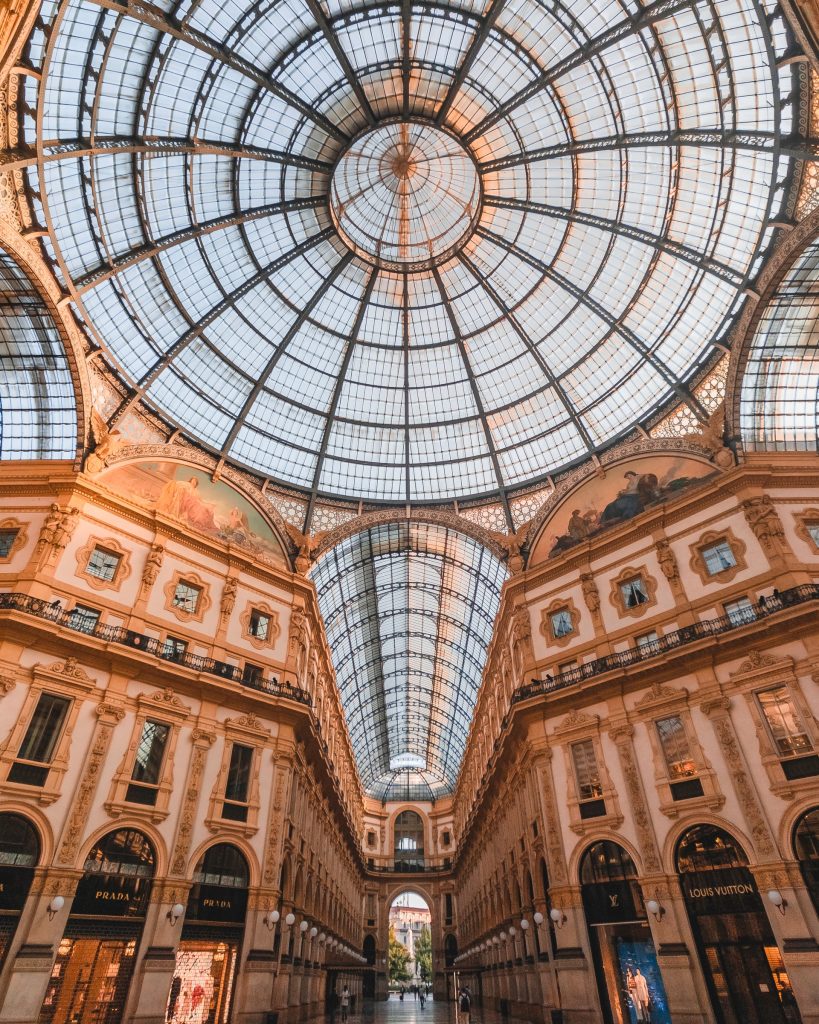
Museo Nazionale della Scienza e della Tecnologia Leonardo da Vinci
Housed in a former monastery building, this remarkable museum is dedicated to the history of science and technology, beginning with the inventions of early scientists and ending with modern works. The attraction for which so many people from around the world flock to this museum is the gallery dedicated to Leonardo da Vinci's inventions, where you can find working machines recreated from his drawings. In addition, the museum's exhibits include numerous devices that provide historical documentation of the work of Galileo Galilei, Newton and Volta, mainly in the fields of physics and transportation more broadly.
The museum displays a total of more than 15,000 various exhibits that make up the picture of Italian science and technology. The place makes you realize how great the contribution of Italians to the development of mankind has been and how much influence they have had on the world we live in today.
The museum is open from Tuesday to Sunday. Opening hours are 9:30 a.m. to 5 p.m. on weekdays, and 9:30 a.m. to 6:30 p.m. on weekends. The cost of an entrance ticket is €7-10. The cost of a guided tour is about €20 per person.
Naviglio Grande
Milan's attractions include not only the strict historical center, but also variety for partygoers. One of the more lively areas of the city is the area around the Naviglio Grande canal, along which there is a mass of cool pubs and music clubs. During the day, it's worth a visit for some quiet sightseeing and a local meal, while in the evening it draws crowds craving a party atmosphere.
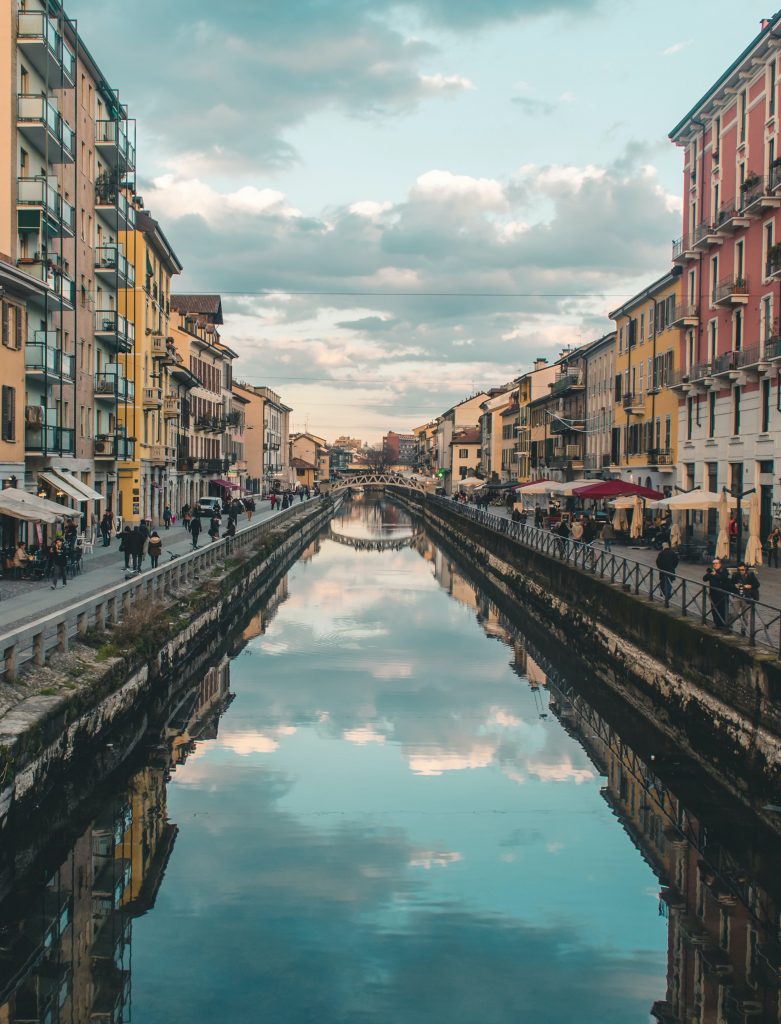
The surrounding area is very picturesque, the 13th-century Naviglio Canal is one of the few Milanese canals where water still flows through. The boats passing through here and the multitude of restaurants on the waterfront make this place associated with Venice. The canal is located just 2 km from Il Duomo Cathedral, so you can get here on foot as part of your city tour or take public transportation, which runs every few minutes on this route.
Bosco Verticale
In Milan, we can also find modern architectural wonders whose fame has swept the world. Such is the case of Bosco Verticale, or the two residential skyscrapers in the Porta Nuova district, whose name can be translated as "vertical forest." The name aptly conveys the nature of these buildings, as they are overgrown with vegetation, and mainly trees, of which there are almost 1,000 in total!
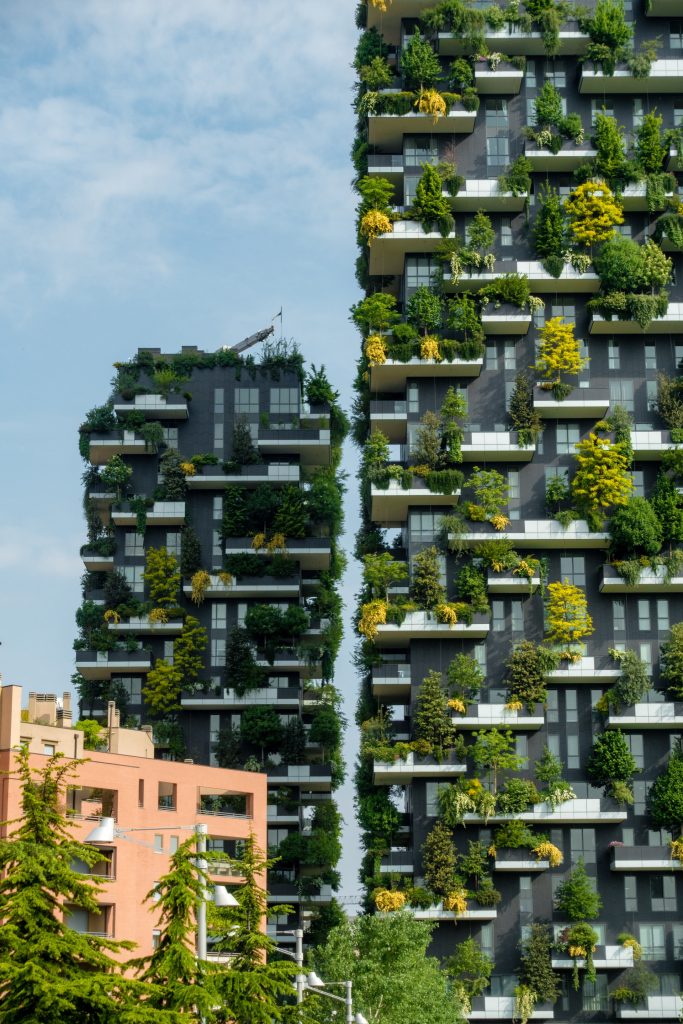
The skyscrapers were completed in 2014 and have since become one of the more recognizable landmarks on Milan's tourist map, despite the fact that they are not strictly tourist attractions, but simply residential buildings. The taller tower is 111m and the smaller one is 76m, they have received many prestigious awards and are one of the more spectacular examples of incorporating greenery into urban space.
How to get to Milan?
Milan is one of those European cities that have a really good and cheap connection with Poland. Ryanair airlines offer a direct connection to the airport of Milan-Bergamo, from Poland you can fly in this direction from as many as 5 destinations: Warsaw, Krakow, Gdansk, Katowice and Poznan. The cost of a one-way ticket is generally only a few dozen zlotys.
Wizzair is not lagging behind, as its planes also fly to Bergamo, and most connections from Poland overlap with competing airlines. Indeed, the Hungarian carrier's machines fly from Warsaw, Krakow, Katowice and Gdansk. Ticket prices are similar to those of competitors.
It is important to note that Bergamo airport is located about 50 km from Milan, so you have to get to the city - for example, aboard a bus. There are several private carriers on this popular route, and departures are more than hourly. Buses park under the arrivals hall, and a ticket to Milan costs approx. 5€. The final bus stop is Stazione Centrale, a place located about 3 km from Milan Cathedral.
Weather in Milan
The weather in Milan is characterized by warm, humid summers and cool, foggy winters. The climate here clearly distinguishes four seasons, although it is still warmer here than in Poland. The warmest months are July and August, with maximum average daily temperatures hovering around 30 degrees Celsius. Summer nights are also very warm, with an average temperature of almost 20 degrees then. The coldest months are December and January, when daytime temperatures are around 6-7 degrees, and frosts occur at night.
As for the average monthly precipitation in Milan, the most is in October - the average precipitation for that month is 125mm. Interestingly, the driest month of the year is February - the average precipitation then is only 48mm, less even than in the middle of summer. A good month to come to Milan is June - the city is still before the peak season and the biggest heat wave, and this month is also characterized by low rainfall.
Cuisine. What to eat.
One of the oldest Milanese dishes is the Cotoletta alla Milanese - The first references to it date back to the 12th century. It can be said that this dish is to Italians what pork chop is to Poles. Indeed, cotoletta is a thin veal cutlet breaded in egg and bread crumbs, cooked in a frying pan, preferably in clarified butter. The rights to the authorship of this dish have been claimed for years by the Austrians, whose cuisine is famous for their excellent schnitzels. However, there is a belief that they managed to get the recipe for cotoletta centuries ago, during the occupation of Lombardy.
Another traditional dish from the city is the Risotto alla Milanese, which is an aromatic risotto made with browned onions, beef broth and white wine. Popular additions to this dish are finely grated Parmesan cheese and butter, as well as a little saffron, which is considered the world's most expensive spice. There is speculation that the roots of this dish go all the way back to the 16th century and are the result of a culinary experiment conducted by a Milanese painter.
A local delicacy is also Cassöeula, which is a pork-based dish with the addition of cabbage. The ingredients also include tomato puree, onions and carrots, among others. It is a traditional, though perhaps not very sophisticated, dish that has its origins in 16th-century Lombardy.
Accommodation in Milan
Milan has a rich accommodation base, which mainly includes private apartments, hotels of varying standards, guest houses and hostels. During the holiday season, prices start at around €45 per night for 2 people in a room with shared bathroom facilities. However, the cheapest accommodations are located far from the center, so they are a good option only for tourists on a tight budget.
If we want to book accommodation in a room with a private bathroom and less than 1 km from the center, we need to double our budget. The cost of renting such accommodation is from 85€ upwards per night, but at this price we already have a modern studio or a private apartment the size of a small apartment.
Compared to Western European metropolises, Milan comes out quite affordable when it comes to accommodation costs. The situation is also improved by the very low cost of flights, which attracts many tourists from Poland to this city every year.
Below are the current prices and options for accommodations on bookings:
Booking.com
